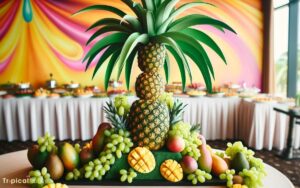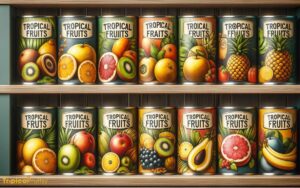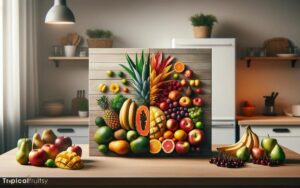Tropical Fruits You Can Grow Indoors: Explained!
Growing tropical fruits indoors is achievable and can add a touch of the exotic to your home.
With the right care, it’s possible to cultivate a variety of tropical fruits such as dwarf citrus trees, pineapples, and avocados right in your living room.
To successfully grow tropical fruits indoors, you need to mimic their native environment as much as possible.
This involves selecting the right containers, ensuring adequate lighting, maintaining humidity levels, and providing the correct soil mixture.
Indoor tropical fruit gardens bring a slice of paradise into your home, alongside the joy of harvesting your own exotic treats.
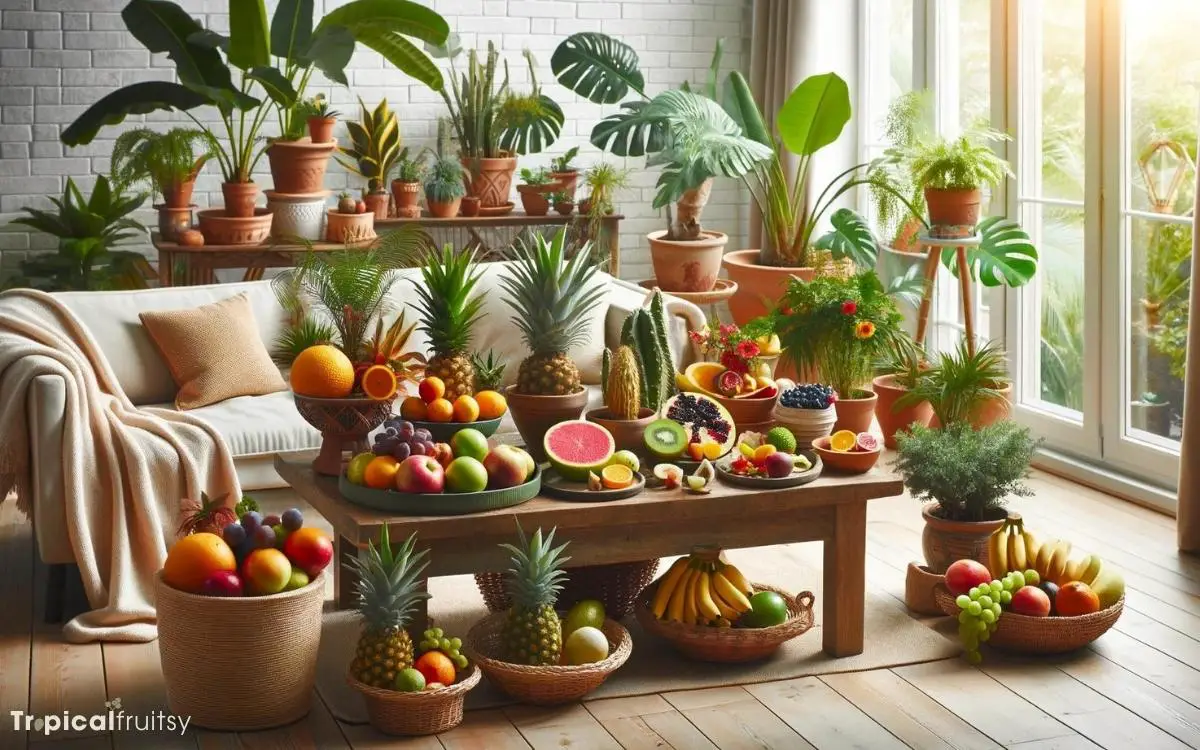
Key Takeaway
Indoor Tropical Fruit Growing Comprehensive Chart
| Fruit Type | Container Size | Light Requirements | Watering Needs | Additional Care Tips |
|---|---|---|---|---|
| Dwarf Citrus Trees | 12-18 inches deep | Bright, direct sunlight | Keep soil consistently moist | Fertilize regularly |
| Pineapple | 10-12 inches wide | Warm, indirect light | Allow top inch of soil to dry between waterings | Avoid overwatering |
| Avocado | 8-10 inches wide | Bright, indirect sunlight | Water deeply but infrequently | Use a well-draining soil |
Selecting Suitable Containers
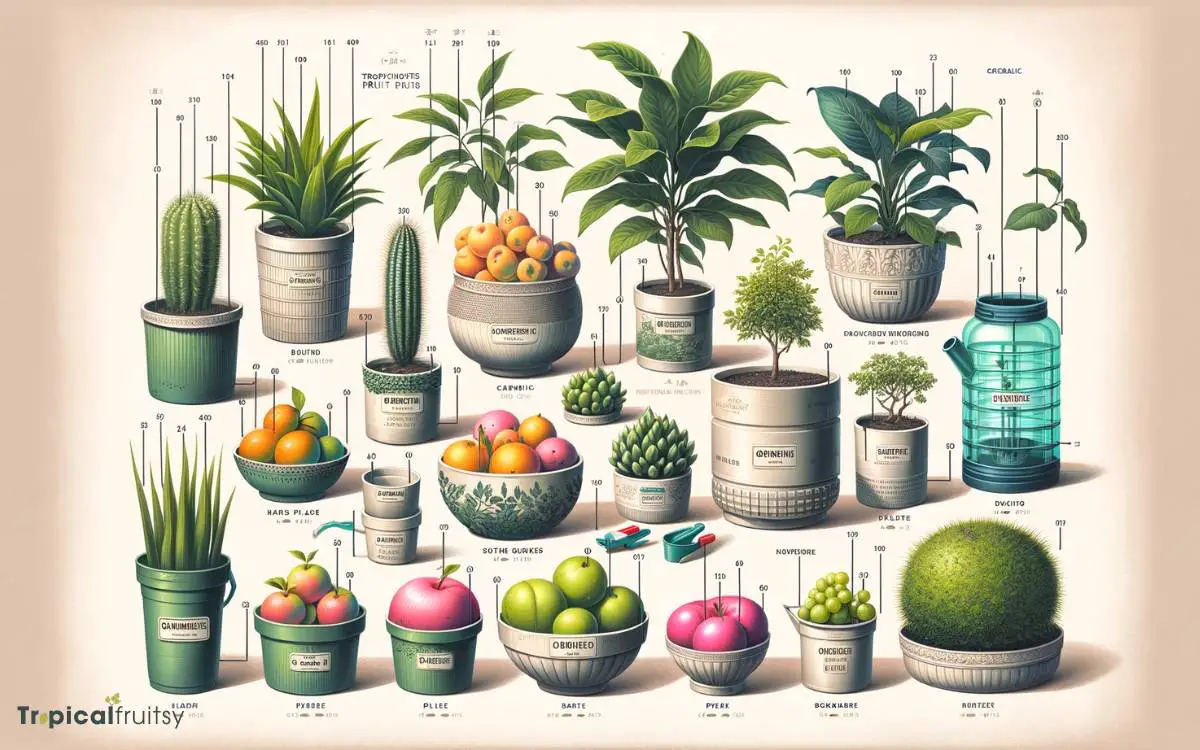
Selecting the appropriate container is essential for the successful indoor cultivation of tropical fruit plants.
The chosen vessel must accommodate the plant’s root system while allowing for growth and ensuring proper drainage to prevent root rot.
Containers made of breathable materials like terracotta can be highly beneficial, as they allow air to reach the soil, promoting healthy root development.
Size is also crucial; a pot that is too large can lead to moisture retention and an imbalance in soil-to-root ratio, while one that is too small may constrict root growth and limit the plant’s potential.
The container should support the plant’s weight, especially as it matures. With the correct container in place, attention must then turn to establishing the essential indoor growing conditions.
Essential Indoor Growing Conditions
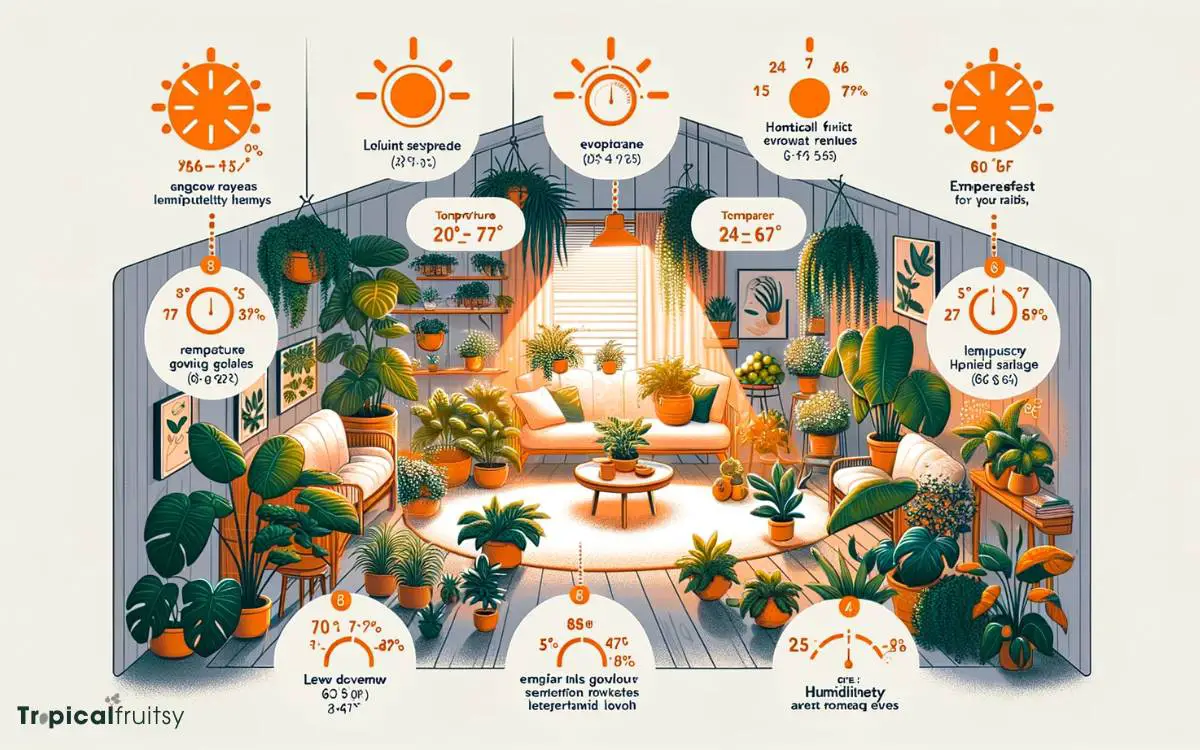
Once the appropriate container has been chosen, establishing optimal indoor growing conditions becomes paramount for the health and productivity of tropical fruit plants.
Tropical fruits typically require a consistent temperature range, often between 65-85°F, which mimics their native equatorial climates. Humidity is also crucial; a level of 40-60% is ideal for most tropical species to thrive.
Moreover, these plants need ample sunlight or a suitable artificial light source, ensuring they receive at least six to eight hours of bright light daily.
Regular watering, while avoiding waterlogging, is essential to maintain moist soil that tropical plants favor.
Additionally, a well-draining soil mix prevents root rot and supports nutrient uptake. With these conditions met, your indoor tropical fruit trees will be ready for the next step: nurturing dwarf citrus trees.
Nurturing Dwarf Citrus Trees
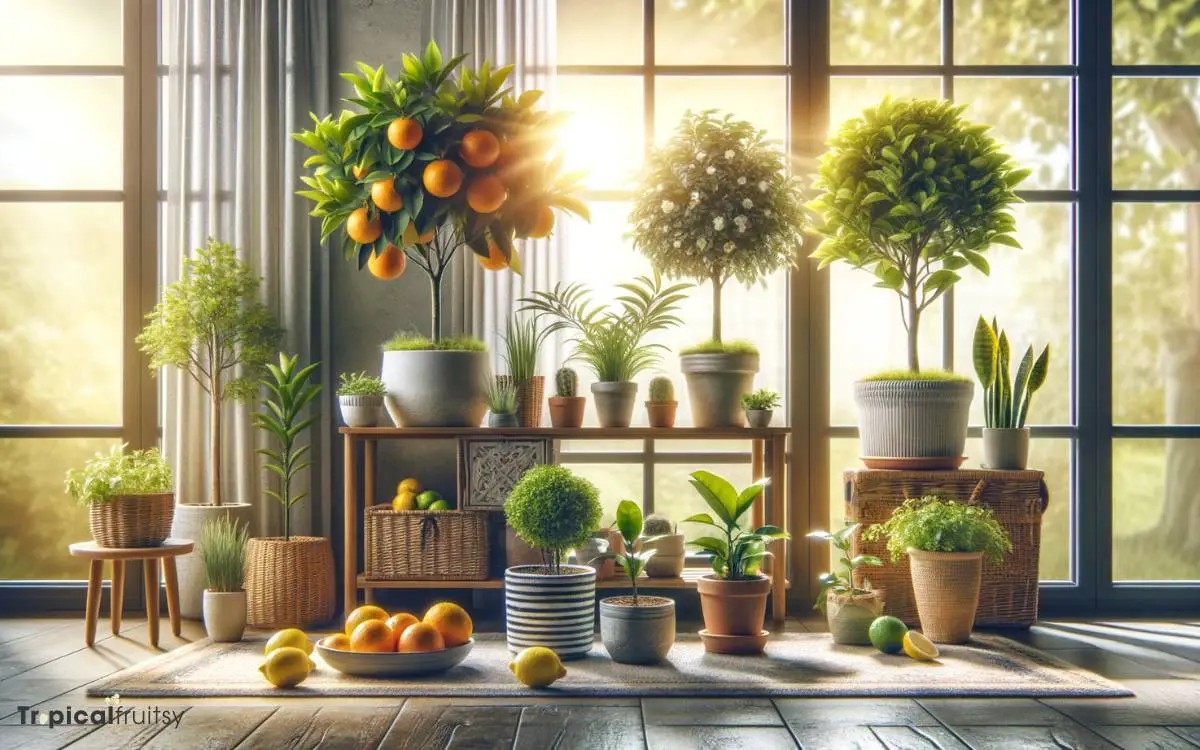
Considering the unique needs of dwarf citrus trees, indoor gardeners must provide ample light, consistent watering, and regular feeding to ensure their healthy growth and fruit production.
These miniature trees thrive under bright, indirect sunlight for at least 6-8 hours daily. If natural light is insufficient, supplemental LED or fluorescent grow lights are indispensable for maintaining the required light levels.
Watering should be done when the top inch of soil becomes dry, avoiding both over and under-watering, which can lead to root rot or stress.
Dwarf citrus trees benefit from a balanced, slow-release fertilizer rich in micronutrients, applied according to the product’s instructions, typically every few weeks during the growing season.
Pruning to shape the tree and remove dead or crossed branches is also essential to promote air circulation and fruit set.
Caring for Indoor Pineapples
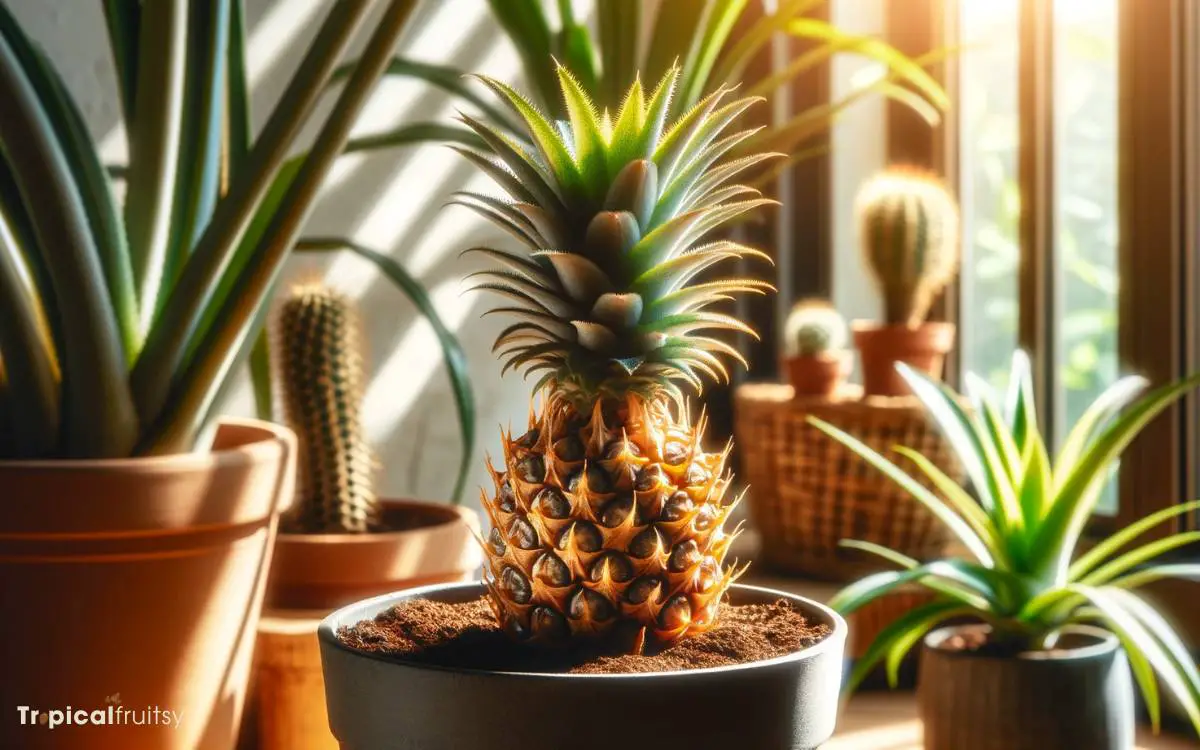
Transitioning from the care of dwarf citrus trees, indoor gardeners can also cultivate pineapples by providing them with a warm environment and consistent moisture.
Thriving in temperatures between 65°F and 85°F, pineapples demand a bright, indirect light source for about six hours daily.
Use a well-draining potting mix and a pot with ample drainage to prevent root rot. Water the plant when the top inch of soil feels dry, ensuring a balance between hydration and aeration.
Fertilize your indoor pineapple plant every few months using a balanced, water-soluble fertilizer, diluted to half the recommended strength.
Monitor for pests such as scale insects and spider mites, and employ organic pest control methods if necessary. With attentive care, your indoor pineapple can become a lush, fruit-bearing specimen.
Can You Grow the Same Indoor Tropical Fruits in Pots?
Yes, you can grow a variety of tropical fruits in pots, such as bananas, pineapples, and citrus fruits. As long as you provide the right conditions, including the right soil, sunlight, and water, you can successfully grow tropical fruits in pots indoors.
Propagating Avocado Plants Indoors
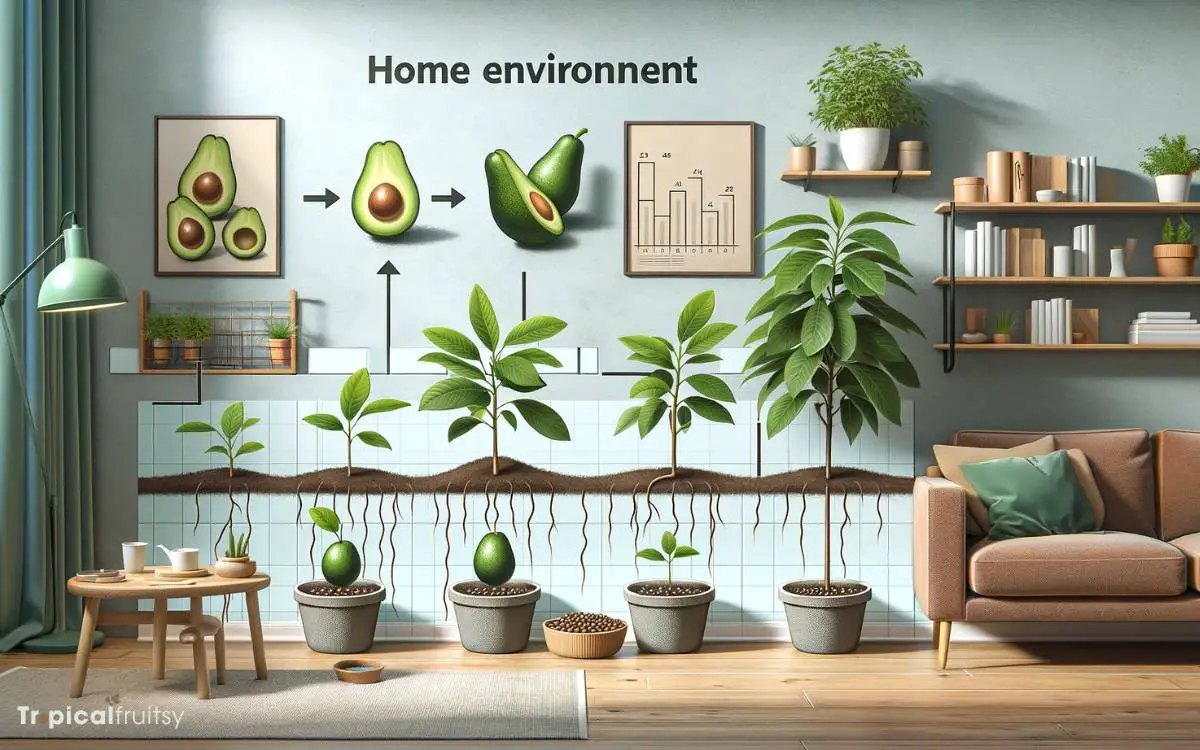
After successfully caring for indoor pineapple plants, one can venture into propagating avocado trees, which require a deep pot, patience, and consistent care to thrive in an indoor setting.
The process begins with the germination of an avocado pit. Submerge the bottom half of the pit in water, using toothpicks to suspend it over a container. Patience is key here, as it may take several weeks to sprout.
Once the pit sprouts and the root system is robust, you can plant it in soil:
- A Deep Connection: Nurturing an avocado tree indoors symbolizes deep-rooted growth and resilience.
- Anticipation of Harvest: Imagine the joy of harvesting your very own avocados, right from your living room.
- Continuity of Care: Each new leaf unfurling represents the ongoing care and attention you’ve invested.
Conclusion
The successful indoor cultivation of tropical fruits hinges on meticulous selection of containers, creation of optimal growing conditions, and dedicated care for species such as dwarf citrus trees, pineapples, and avocados.
While patience is a virtue in nurturing these exotic edibles, the reward is a bountiful indoor oasis that brings a taste of the tropics to the temperate home. Thus, even the most unlikely spaces can bear fruit with the right approach and perseverance.


